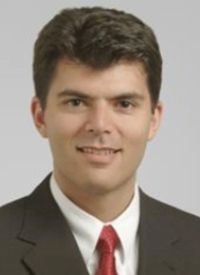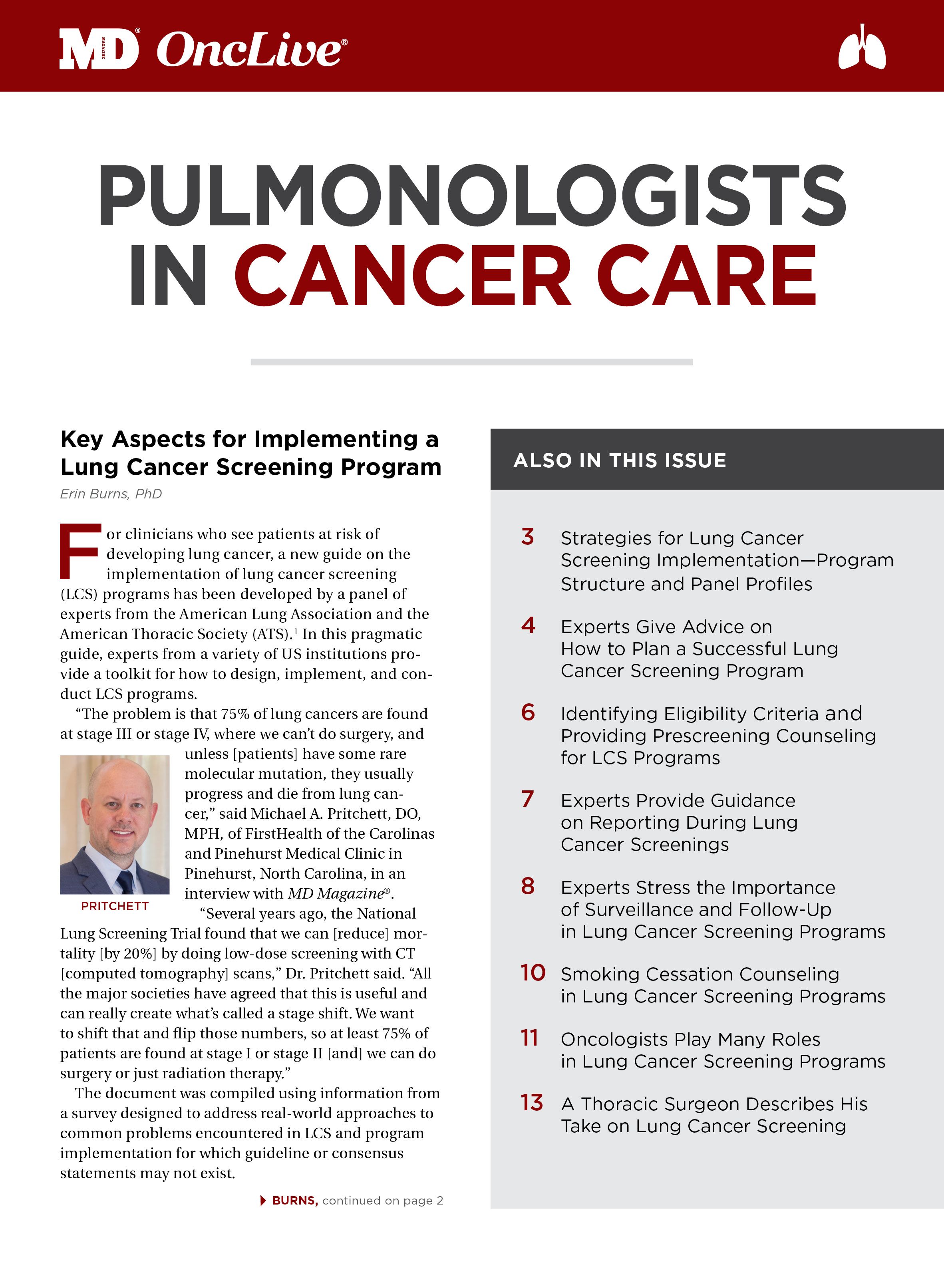Experts Stress the Importance of Surveillance and Follow-Up in Lung Cancer Screening Programs
The new online lung cancer screening (LCS) guide from the American Lung Association and the American Thoracic Society sets a clear pathway for physicians to surveil patients and provide follow-up from many institutions across the United States.
Peter J. Mazzone MD, MPH

Peter J. Mazzone MD, MPH
The new online lung cancer screening (LCS) guide from the American Lung Association and the American Thoracic Society will be able to provide critical information on designing, implementing, and conducting LCS programs.1
But perhaps more importantly, the guide sets a clear pathway for physicians to surveil patients and provide follow-up from many institutions across the United States.
“People don’t realize that lung cancer kills more people every year than breast, prostate, colon, and pancreatic cancers all combined,” Michael A. Pritchett, DO, MPH, of FirstHealth of the Carolinas and Pinehurst Medical Clinic, North Carolina, said in an interview with MD Magazine®. “The 5-year survival rate of all patients with lung cancer is 18%...which is abysmal. That is the reason why we desperately need something to catch these patients early.”
The document was compiled using information obtained from a survey designed to address realworld approaches to LCS programs. Experts were queried regarding follow-up of patients with missed exams, management of abnormal findings, and patient discharge.
Tracking Patients With Missed Exams
“We’ve found that up to a third of the patients who are referred to our program and are eligible for screening haven’t come for their screening exam,” Peter J. Mazzone, MD, MPH, of Cleveland Clinic in Ohio, and an author on the guide, explained to MD Magazine®.
“Some of the reasons patients have given us are that they weren’t aware the screening had been ordered for them, that the screening facility was too far for them to travel to, that they were worried about their insurance not covering the scan and the visit, and that they were worried about the findings on the scan— worried about being found to have something serious,” Dr. Mazzone said. “Our efforts, then, are to take those answers and make sure they’re not barriers to our patients.
“After they’ve come to us, if they have a finding that needs follow-up sooner than their annual screening visit or if they just need their annual screening visit, there is still a challenge to make sure that a patient is compliant with the recommended follow-up,” Dr. Mazzone added.
As a result, patient management software programs have been developed to help track patients in LCS programs. These programs can automatically generate reminders for patients in the form of letters and phone calls.
“We also try…to relay to patients that this is not just a single visit—it’s a program,” Dr. Mazzone explained. “It’s an annual visit even if there’s nothing concerning found, and if there is something concerning found, the only way to benefit from being screened is to follow through on those results.”
Managing Lung Nodules and Incidental Findings
Abnormal findings can be classified as lung nodules, which may or may not be lung cancer, or findings from chest scans that are unrelated to the lung, such as coronary artery calcification.
“When we find lung nodules, the management is based on how risky those nodules are,” Dr. Mazzone explained. “There is a system of reading and reporting the scans called Lung-RADS, which is put together by the American College of Radiology.”
Patients with a Lung-RADS 1 score do not have lung nodules and will be seen in a year for their annual scan. Those with a Lung-RADS 2 score have very small, lowrisk lung nodules that do not require treatment and will also be seen in a year for their annual scan. Patients with a Lung-RADS 3 score have nodules that are too small to remove or biopsy and will be seen in 6 months for a follow-up scan. Patients with a Lung-RADS 4 score may need a follow-up scan in 3 months or immediate treatment, for which management may vary by program.
“In a system where we have a software program to capture those scores, [we can review them] and jump in and intervene as a hospital system,” Dr. Pritchett explained, “and we can follow up with the primary care doctors that way. Otherwise, they’re usually referred to a pulmonologist or a thoracic surgeon so that we can determine the best way to get a biopsy of the lesion.
“For the non-nodule findings…it’s also important to have a plan in place,” Dr. Mazzone said. “For example, our program [has] partnered with specialists in other areas…and we’ve put care pathways in place for when we find those things.”
Patient Discharge
Patients are discharged from LCS programs by request, movement out of the area, inability to receive a follow- up order from their provider, receipt of screening or treatment at another facility, or age exceeding the upper limit of the program. Patients may also be unenrolled following several no-shows or if they develop a comorbidity that prohibits surgical treatment.
“For practicing clinicians who are interested in screening and looking to develop or improve a screening program, they can take away that there are many ways to do it, but all of them come back to how can we provide the highest quality care for our patients,” Dr. Mazzone said.
Thomson CC, McKee A, Borondy-Kitts A, et al; American Thoracic Society, American Lung Association. Lung cancer screening implementation guide. lung.org/assets/documents/lung-cancer/implementation-guide-for-lung. pdf. Accessed November 5, 2018.




